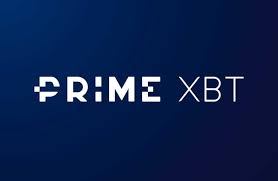How important is algorithmic trading in the retail market?
The computerization of the financial markets industry began as far back as the early 1970s and program trading became widely used in the 1980s, especially within the futures markets and the S&P 500 index, followed by electronic execution and communication networks which had become fully developed by the 1990s. In 2001, IBM attracted much attention when a […]

The computerization of the financial markets industry began as far back as the early 1970s and program trading became widely used in the 1980s, especially within the futures markets and the S&P 500 index, followed by electronic execution and communication networks which had become fully developed by the 1990s.
In 2001, IBM attracted much attention when a report was issued by the company which proved that two algorithmic trading strategies could beat human traders consistently.
Increased market liquidity and advancing technologies allowed Electronic Communication Networks (ECN) to execute orders at lower spreads and ultra-low latency.
Algorithmic trading uses mathematical formulas and high-speed computer programs to determine trading strategies, and electronic platforms to execute pre-determined orders based on variables such as price, volume and timing. While it is used by investment banks, funds, and institutional traders, in recent years we have seen an overwhelming rise in demand (and supply) for the retail market. When it comes to foreign exchange, retail traders are estimated to account for 5 percent of the whole market, which amounts to $250 billion in daily trading turnover.
While most algo trading volume is conducted via high-frequency trading (HFT) methodology and unfeasible to retail participants, traders can still find an edge with this solution, arguing that if a manual strategy can be profitable, it can be automated and be profitable but it is widely accepted that this type of trading cannot be successful with one algorithm only due to ever changing market conditions, requiring frequent tweaks to survive over the long term.

Many traders also use semi-algorithmic trading, monitoring and adjusting manually the orders while leaving hardcore data processing for the computer.
Typographical errors and technological glitches can be quite a scare for algo traders, but the learning process and work to write thousands of lines of code in order to program a profitable strategy is the biggest challenge. That is why financial technology companies that develop algo-friendly trading platforms have been competing to provide services that suit traders best, from the range of add-ons to a solid programming language, indicators, templates, backtesting, as examples.
However, since retail traders are individuals mostly acting on their own, the industry soon found value in building communities to enable traders to develop their code and skills, while at the same time becoming loyal to the trading platform.
All of this is all very well for well capitalized institutions, or the proprietary trading desks of New York and Chicago, however for retail traders, investment in vast infrastructure is not practical. The landscape is evolving, however and the ability for retail traders to develop their own software for retail trading platforms is paramount nowadays, as is the ability to trade using algorithms whilst ensuring that the entire trading system meets the practical requirements of a retail trader.
FinanceFeeds today spoke today to James Glyde, Business Development Manager at Spotware Systems, about the importance algorithmic trading being made available to retail traders.
“Algo trading has great importance within the retail sector, not just because it farms volume for brokers but also drives a community for traders, this is why it’s deeply important to provide a venue for this community allowing it to flourish without limits and potentially evolve into an autonomous environment” said Mr. Glyde.
“Trading strategies can be complex and obscure which is why it is essential to provide rich API’s using well known languages for traders to give traders and developers absolute freedom to employ any strategy of their desire. Based on this understanding Spotware encourage all developers to connect their apps to cTrader using our Open API and provide resources for developers using C#, JavaScript, Node.js, Java or Xamarin to create their apps” – James Glyde, Business Development Manager, Spotware Systems
To understand from a first-person perspective what a retail trader goes through, FinanceFeeds reporter Ricardo Esteves had a chat with Vasco Ferreira, a Forex retail trader based in Portugal.
“Every form of trading has its place and every trader should adopt the form that fits their goals and more importantly, their risk profile. I use algo trading because it allows me to manage my time without being constantly monitoring the market, but also because i can be sure that i didn’t see anything wrong at a particular moment and i don’t have to rush making the math or risk losing the opportunity” said Mr. Ferreira.
Of course some people enjoy the thrill of actually being “inside” the market, manually executing their trades and monitoring every up and down tick, and that’s ok. It’s just not for me. Another important thing about algo trading is related to the backtesting. Most people executing manual trades will have a hard time backtesting a considerable amount of trades, say at least 100. I’m not saying it’s impossible, but it’s definitely harder than using algo trading.
Automating your strategy allows you to test accurately (well, depending on your data source) and very quickly a huge number of trades. Now, what some consider the downside is the “my strategy is impossible to automate” argument. Well, i’ve almost surrendered to that but i have to say that’s my favourite part at the moment. I love the challenge and have come to believe that you can automate even the most difficult and complex strategy, and actually those are the ones that should be automated.”
Some may question whether algorithmic traders can still succeed at the retail level due to some disadvantages against the institutional market, but their lot size gives them freedom to navigate the market without “crowding the trade”, and don’t have the same regulatory and shareholder politics problems as firms do. However, while having the ability to have a looser risk management policy, it often comes costly, especially to the novice trader. What is for certain is that algorithmic trading continues to attract new traders and getting a larger adoption, onboarding new technology solution providers as well.









